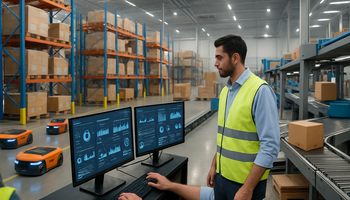The retail landscape has undergone a dramatic transformation in recent years, accelerated by technological advancements and changing consumer expectations. At the forefront of this revolution is artificial intelligence (AI), which is redefining how retailers engage with customers and deliver personalized experiences at scale.
In this comprehensive article, we'll explore how AI is revolutionizing customer experience in retail, from personalized shopping journeys to seamless omnichannel integration, and what this means for retailers looking to stay competitive in a rapidly evolving marketplace.
The Evolution of Retail Customer Experience
Traditional retail customer experience was primarily defined by in-store interactions, with success largely dependent on the quality of face-to-face service provided by staff. While this remains important, today's retail customer journey spans multiple touchpoints across digital and physical channels.
Modern consumers expect retailers to recognize them and provide consistent, personalized experiences regardless of how they choose to engage. This shift has created both challenges and opportunities for retailers, with AI emerging as a critical tool for meeting these evolving expectations.

Key AI Applications Transforming Retail Customer Experience
1. Hyper-Personalization at Scale
AI has made it possible for retailers to deliver personalized experiences to millions of customers simultaneously. By analyzing vast amounts of data—including purchase history, browsing behavior, demographic information, and even social media activity—AI algorithms can create detailed customer profiles and predict preferences with remarkable accuracy.
Case Study: Global Fashion Retailer
A leading global fashion retailer implemented an AI-powered recommendation engine that analyzes over 100 data points per customer. The system delivers personalized product recommendations across all digital touchpoints, resulting in a 35% increase in average order value and a 28% improvement in customer retention rates.
These personalization capabilities extend beyond product recommendations to include customized email marketing, tailored promotions, and even personalized website experiences that adapt in real-time based on user behavior.
2. Intelligent Virtual Assistants and Chatbots
AI-powered virtual assistants and chatbots have evolved from simple rule-based systems to sophisticated conversational agents capable of understanding natural language and providing contextually relevant assistance. These tools are transforming customer service in retail by:
- Providing 24/7 customer support across multiple channels
- Offering personalized product recommendations based on customer preferences
- Answering complex product questions with detailed information
- Assisting with order tracking and returns processing
- Collecting valuable customer feedback and insights

Advanced retail chatbots can now handle up to 80% of routine customer inquiries without human intervention, freeing up staff to focus on more complex customer needs while ensuring shoppers receive immediate assistance at any time.
3. Visual Search and Augmented Reality
AI-powered visual search technology allows customers to search for products using images rather than text, making it easier to find items that match their style preferences. By simply uploading a photo or taking a picture, shoppers can discover similar or complementary products in a retailer's inventory.
Augmented reality (AR) takes this a step further by enabling customers to visualize products in their own environment before making a purchase. For example:
- Furniture retailers allow customers to see how items would look in their homes
- Cosmetics brands offer virtual try-on experiences for makeup products
- Fashion retailers provide virtual fitting rooms where customers can see how clothing would look on them
"The combination of AI-powered visual search and augmented reality is creating a new paradigm in retail where the boundaries between online and offline shopping experiences are increasingly blurred."
4. Predictive Analytics for Inventory Management
Few things damage customer experience more than out-of-stock items or long delivery times. AI-powered predictive analytics helps retailers optimize inventory management by forecasting demand patterns with unprecedented accuracy.
These systems analyze historical sales data, seasonal trends, weather forecasts, social media sentiment, and even macroeconomic indicators to predict what products customers will want, when they'll want them, and where they'll want to buy them.

By ensuring the right products are available at the right time and place, retailers can significantly enhance customer satisfaction while reducing costs associated with excess inventory or emergency shipments.
5. Smart In-Store Experiences
AI is also transforming the physical retail environment through technologies like:
- Computer vision systems that analyze store traffic patterns and customer behavior
- Smart shelves that monitor inventory levels in real-time and alert staff when restocking is needed
- Interactive displays that provide personalized product information and recommendations
- Facial recognition (where legally permitted) that identifies loyal customers and enables personalized greetings
- Cashierless checkout systems that eliminate waiting in line
The Future of Physical Retail
The most innovative retailers are using AI to create "phygital" experiences that combine the convenience and personalization of online shopping with the sensory experience and immediate gratification of physical retail. These hybrid models represent the future of retail customer experience.
Overcoming Implementation Challenges
While the benefits of AI in retail are clear, implementing these technologies successfully requires addressing several key challenges:
1. Data Quality and Integration
AI systems are only as good as the data they're trained on. Retailers must ensure they have clean, comprehensive data and the ability to integrate information from multiple sources to create a unified view of each customer.
2. Privacy and Ethical Considerations
As retailers collect more customer data, they must navigate increasingly complex privacy regulations and consumer concerns about how their information is being used. Transparent data practices and strong security measures are essential for maintaining customer trust.
3. Organizational Readiness
Successful AI implementation requires more than just technology—it demands organizational change. Retailers must invest in training staff, adapting business processes, and fostering a culture that embraces data-driven decision-making.

Measuring the Impact of AI on Customer Experience
To justify investment in AI technologies, retailers need clear metrics for measuring their impact on customer experience. Key performance indicators include:
- Customer satisfaction scores (CSAT, NPS)
- Customer lifetime value (CLV)
- Conversion rates across channels
- Average order value
- Customer retention and churn rates
- Time spent engaging with the brand
- Return rates
By tracking these metrics before and after implementing AI solutions, retailers can quantify the return on their investment and identify areas for further improvement.
The Future of AI in Retail Customer Experience
As AI technology continues to evolve, we can expect even more transformative applications in retail customer experience:
Emotion AI and Sentiment Analysis
Advanced AI systems will be able to detect and respond to customer emotions in real-time, whether through facial expression analysis in physical stores or sentiment detection in online interactions. This will enable retailers to provide more empathetic and contextually appropriate service.
Predictive Customer Service
Rather than waiting for customers to report problems, AI will enable retailers to predict issues before they occur and proactively reach out with solutions. For example, if an AI system detects that a delivery is likely to be delayed, it can automatically notify the customer and offer compensation or alternatives.
Voice Commerce and Ambient Computing
As voice assistants become more sophisticated and widespread, voice-based shopping will become increasingly common. Retailers will need to optimize their product information and search capabilities for voice queries and develop distinctive brand voices for these interactions.

Conclusion: Embracing AI as a Competitive Advantage
AI is no longer just a nice-to-have technology for retailers—it's becoming essential for delivering the personalized, seamless experiences that customers expect. Retailers who successfully implement AI across their operations can achieve significant competitive advantages:
- Deeper customer insights leading to more relevant products and services
- More efficient operations that reduce costs while improving service
- Enhanced ability to adapt quickly to changing market conditions
- Stronger customer relationships built on personalized interactions
The retailers who will thrive in the coming years are those who view AI not just as a technology initiative but as a fundamental transformation in how they understand and serve their customers. By putting AI at the center of their customer experience strategy, forward-thinking retailers can create distinctive, memorable experiences that drive loyalty and growth in an increasingly competitive marketplace.





